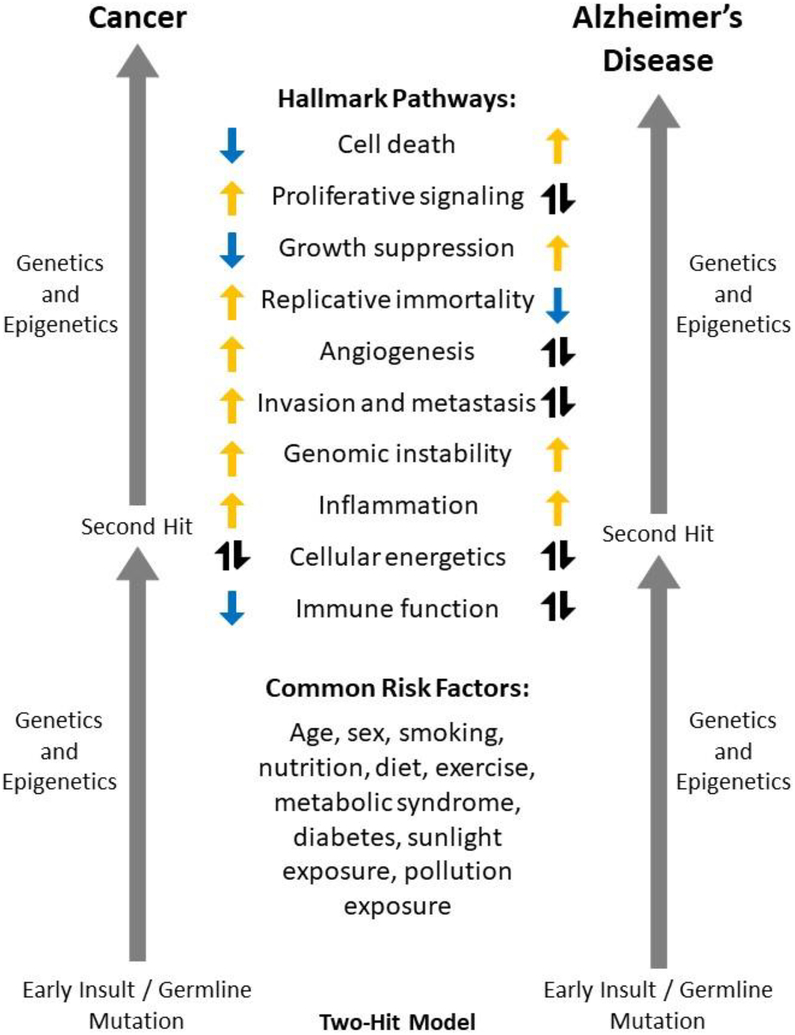Figure 2. Cancer and AD Model.
This model shows the two-hit hypothesis widely accepted as a common mechanism of oncogenesis and more recently proposed to underlie Alzheimer’s disease (AD) onset, risk factors including many common to both cancer and AD, and the potential contributions of the Hallmarks of Cancer to cancer (left) and AD (right). Orange arrows pointing up indicate a posited or observed increase in this hallmark for each disease; blue arrows pointing down indicate a posited or observed decrease in this hallmark for each disease. Black arrows pointing up and down indicate that this hallmark (or molecules involved in this hallmark) show bi-directional, stage-specific, or pleiotropic effects for the disease. It is important to note that many of these hallmarks could be important both before and after the second hit in both diseases, or could be acting at different stages of disease. ‘Genetics and Epigenetics’ are listed for both diseases before and after the second hit, as genetic background has been posited to contribute to risk and progression for both diseases (beyond the two key mutations cited in the two-hit model), and also may play a role in differential risk for cancer vs. AD.

